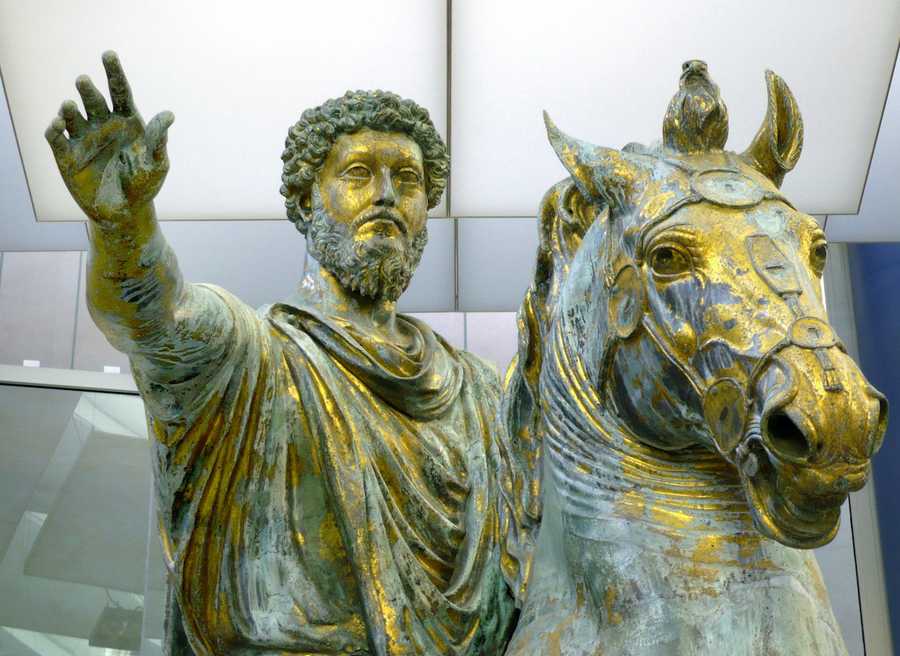During the month of December, Buddy will highlight, the Twelve Days of Fearlessness. Whether it is getting up the nerve to lace up your old ice skates with your five-year-old or conquering a halfpipe like your teenage days, fearlessness is not just situational for all- for some, it is a way of life.

If you’ve been following Buddy’s resolutions from this past year, you may have noticed that one of my goals was to be more stoic. But what exactly does that mean? I promise you, my goal isn’t to become some emotionless automaton, as some naïve pop culture references may suggest. Nor am I hoping to live as a possession-less ascetic monk, devoid of any luxury or sensual pleasure. No, stoic philosophy isn’t about being absent of emotion or possessions, it rather seeks to help the individual center themselves on what is truly important. Stoicism has been around for over 2000 years, and its core tenets remain incredibly useful to us in today’s world. Stoicism is helping me become more centered, focused— and honestly, happier— despite the world around me.
Stoicism was founded in the 3rd century BCE by the philosopher Zeno of Citium while in Athens. It flourished in the classical world, and its most famous adherents being the philosopher Epictetus, writer and statesman Seneca, and most famous of all, Roman emperor Marcus Aurelius (whose personal musings were posthumously published in his Meditations). You’ve likely encountered a Marcus Aurelius quote or two in a business powerpoint or motivational poster somewhere. But his words, if taken to heart, are immensely powerful. They capture his personal journey with Stoicism, as he strove daily toward self-improvement.
One of the most important practices in Stoic philosophy is recognizing what we can change and what we can’t. There is much in this world that we have absolutely no control over, and no amount of emoting, slamming your head against a wall, or screaming will have any impact on it whatsoever. So instead of trying to change the immutable, spend more time on the things you can change.
Given the tumultuous year we’ve had, it has been very hard not to feel immense anger and frustration with the world and many of the things that I cannot control. Stoicism reminds me that “emoting is not helping.” Simply being outraged by injustice does nothing to solve it. No amount of doom scrolling or ranting will help the situation. This isn’t to say that Stoics are doormats willing to accept whatever evils come their way. Far from it. Stoicism demands that we remain focused and actionable. Instead of dwelling on our rage, sadness, or frustration, the Stoic is called to ask themselves, “How can I help fix this?” Spring to action, even if in small ways. Donate. Volunteer. Organize. Do things. Or, move on. Find the things you can influence, and don’t dwell on what you can’t.
Stoicism is fearless. But it’s not borne out of a “macho” understanding of courage and boldness that would have been very appropriate in the ancient world. Stoic fearlessness is borne out of a logical proposition. The Stoics argue that fear is merely a painful distraction that only results in negative outcomes. Acting out of fear can often bring about those very same negative outcomes we feared. When we spend time worrying about events that might happen, we give up our self-control and feel the pain of those fears. If the bad thing we feared never occurs, then we caused ourselves all of that misery for nothing. If that bad thing does indeed happen, we still caused ourselves that misery for nothing, as we were miserable in fear the whole time leading up to the event and again when the bad thing actually happens. To the Stoic, fear is lose-lose, and distracts us from the important action.
When FDR took office in 1933, the Great Depression was in full swing and Fascism was a rising threat across the globe. There was much to fear as banks were failing, people were losing their homes and life-savings, and war was threatening. FDR, in his inaugural speech, echoed the Stoic view:
“So, first of all, let me assert my firm belief that the only thing we have to fear is fear itself—nameless, unreasoning, unjustified terror which paralyzes needed efforts to convert retreat into advance.”
We tend to focus on the first part of his sentence, the part that gets all of the airplay and attention, “the only thing we have to fear is fear itself.” But it’s the second part that I think is the most important— “nameless, unreasoning, unjustified terror which paralyzes needed efforts to convert retreat into advance.” That is the true evil. FDR knew that dwelling in looming fears would do nothing to get us out of one of history’s most troubling times. We must never let our fears consume us, or prevent us from taking important action.
Stoicism can be thought of as a lifelong discipline. It requires daily practice and reflection, and there’s no one point when anyone can say they’ve mastered it. Despite this, I find it an incredibly useful tool for focusing myself and overall being a better person. I’ve only touched on a tiny fraction of Stoicism’s core concepts here, but I hope that it’s useful to you.
If you’re interested in learning more about Stoic philosophy, I recommend starting with Ryan Holliday’s The Daily Stoic, which was gifted to me by a friend, and was instrumental in guiding my practice. If you’re not ready to purchase a book, you can also sign up for a 7-day free email guide of resources and exercises to see if it’s something for you.


